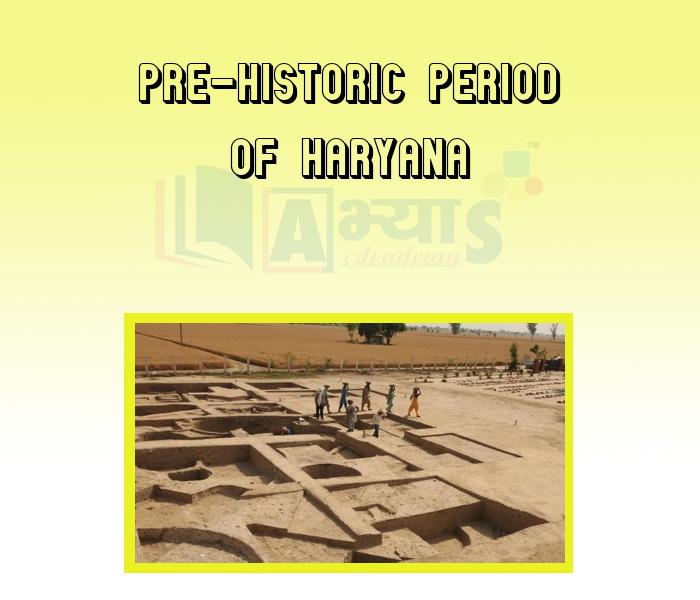Pre-Historic Period Of Haryana












Pre - Historic Period Of Haryana
Ancient History of Haryana
Pre - Historic Period
The period which has no written evidences is known as pre-historic period. The relics of the pre - historic period give information about Haryana state. This period is divided into three different periods i.e. Palaeolithic Age, Mesolithic Age and Neolithic Age. These are discussed below:
1. Palaeolithic Age
(i) Lower Palaeolithic Period (5,00,000 to 1,25,000 years ago)
(ii) Middle Palaeolithic Period (1,25,000 to 40,000 years ago)
(iii) Upper Palaeolithic Period (40,000 to 10,000 years ago)
2. Mesolithic Age
Guy Ellcock pilgrim found a skull from ______________________ which proved that about 15 million years ago, there were primitive humans beings in Haryana. | |||
| Right Option : A | |||
| View Explanation | |||
Which of the following are correct : (a) Evidences of Lower Palaeolithic period in Haryana are found from the hills of Shivalik near Pinjore-Kalka. (b) In Middle Palaeolithic Period human used small stone tools like scrapers and borers, etc. (c) The tools of Upper Palaeolithic Period were much bigger and heavier than the middle Palaeolithic period. | |||
| Right Option : A | |||
| View Explanation | |||
Which of the following are correct : (a) The Pre - Historic Period is divided into three parts. (b) The three different periods of Pre historic Period are lower Palaeolithic Age,Middle Palaeolithic Age and Upper Palaeolithic Age. | |||
| Right Option : A | |||
| View Explanation | |||
Students / Parents Reviews [10]
Abhyas is a complete education Institute. Here extreme care is taken by teacher with the help of regular exam. Extra classes also conducted by the institute, if the student is weak.

Om Umang
10thOne of the best institutes to develope a child interest in studies.Provides SST and English knowledge also unlike other institutes. Teachers are co operative and friendly online tests andPPT develope practical knowledge also.

Aman Kumar Shrivastava
10thBeing a parent, I saw my daughter improvement in her studies by seeing a good result in all day to day compititive exam TMO, NSO, IEO etc and as well as studies. I have got a fruitful result from my daughter.

Prisha Gupta
8thMy experience with Abhyas academy is very good. I did not think that my every subject coming here will be so strong. The main thing is that the online tests had made me learn here more things.

Hiya Gupta
8thAbout Abhyas metholodology the teachers are very nice and hardworking toward students.The Centre Head Mrs Anu Sethi is also a brilliant teacher.Abhyas has taught me how to overcome problems and has always taken my doubts and suppoeted me.

Shreya Shrivastava
8thA marvelous experience with Abhyas. I am glad to share that my ward has achieved more than enough at the Ambala ABHYAS centre. Years have passed on and more and more he has gained. May the centre flourish and develop day by day by the grace of God.

Archit Segal
7thAbhyas Methodology is very good. It is based on according to student and each child manages accordingly to its properly. Methodology has improved the abilities of students to shine them in future.

Manish Kumar
10thIt was a good experience with Abhyas Academy. I even faced problems in starting but slowly and steadily overcomed. Especially reasoning classes helped me a lot.

Cheshta
10thI have spent a wonderful time in Abhyas academy. It has made my reasoning more apt, English more stronger and Maths an interesting subject for me. It has given me a habbit of self studying

Yatharthi Sharma
10thMy experience was very good with Abhyas academy. I am studying here from 6th class and I am satisfied by its results in my life. I improved a lot here ahead of school syllabus.
